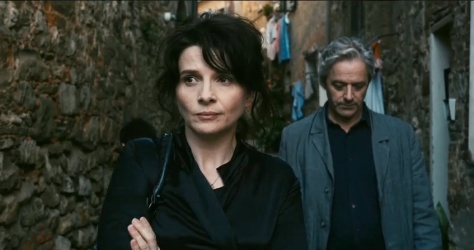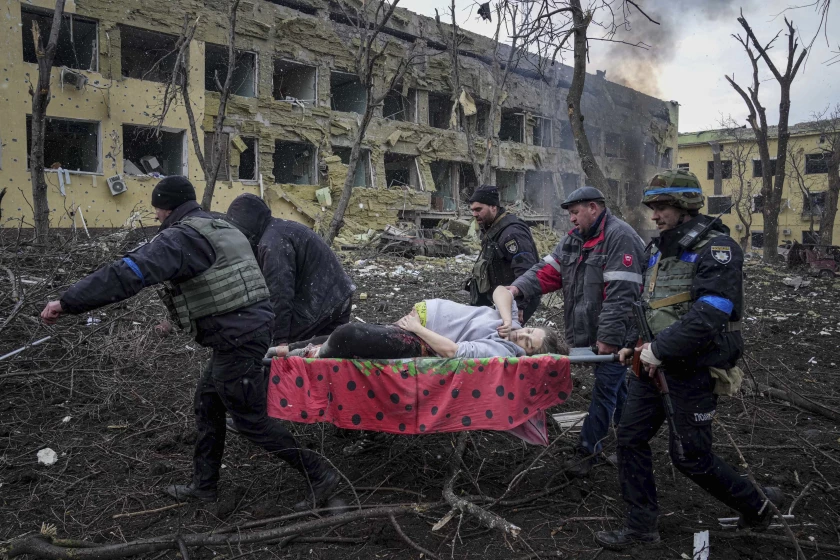By Dennis Hartley
(Originally posted on Digby’s Hullabaloo on April 2, 2022)

I know. April Fool’s Day was yesterday. But then again, in the grand scheme of things, does that really matter? What is reality, anyway? Besides, this piece is about film, which is scant more than a (to quote Orson Welles) “ribbon of dreams” to begin with. So with that in mind, I’ve curated my top 10 narrative films wherein the characters and/or the movie audience are fooled, conned, surprised, or shockingly betrayed. Alphabetically…

Barry Lyndon – Stanley Kubrick’s beautifully photographed, leisurely paced adaptation of William Makepeace Thackeray’s rags-to-riches-to-rags tale about a roguish Irishman (Ryan O’Neal) who grifts his way into the English aristocracy is akin to watching 18th-century paintings sumptuously spring to life (funnily enough, its detractors tend to liken it to “oil paintings” as well, but for entirely different reasons). The cast includes Marisa Berenson, Patrick Magee, Leonard Rossiter and Leon Vitali.
This magnificent 1975 film has improved with age, like a fine wine; successive viewings prove the stories about Kubrick’s obsession with the minutest of details were not exaggerated-every frame is steeped in verisimilitude. Michael Hordern’s delightfully droll voice over work as The Narrator rescues the proceedings from sliding into staidness. The most elegant “long con” in cinema…from both a narrative and visual standpoint.

Carny–This oddball affair (Freaks meets Toby Tyler in Nightmare Alley) is set in the seedy milieu of a traveling carnival. Robbie Robertson and Gary Busey star as longtime pals and carnies who take a teenage runaway (Jodie Foster) under their wing and give her a crash course in the art of the con (i.e. hustling customers out of their hard-earned cash).
The story is elevated above its inherent sleaze factor by the excellent performances. Busey’s work here is a reminder that at one time, he was one of the most promising young actors around (up until the unfortunate motorcycle mishap). Director/co-writer Robert Kaylor also showed promise, but has an enigmatic resume; a film in 1970, one in 1971, Carny in 1980, a nondescript Chad Lowe vehicle in 1989, then…he’s off the radar.

Certified Copy – Just as you’re lulled into thinking this is going to be one of those brainy, talky, yet pleasantly diverting romantic romps where you and your date can amuse yourselves by placing bets on “will they or won’t they-that is, if they can both shut up long enough to get down to business before the credits roll” propositions, Iranian director Abbas Kiarostami throws you a curve ball.
Then again, maybe this film isn’t so much about “thinking”, as it is about “perceiving”. Because if a “film” is merely (if I may quote Mr. Welles again) “a ribbon of dreams”-then Certified Copy, like any true work of art, is simply what you perceive it to be-nothing more, nothing less. Even if it leaves you scratching your head, you get to revel in the luminosity of Juliette Binoche’s amazing performance; there’s pure poetry in every glance, every gesture. (Full Review)

The Master– As Inspector Clouseau once ruminated, “Well you know, there are leaders…and there are followers.” At its most rudimentary level, Paul Thomas Anderson’s film is a two-character study about a leader and a follower (and metaphorically, all leaders and followers).
It’s also a story about a complex surrogate father-son relationship (a recurring theme in the director’s oeuvre). And yes, there are some who feel the film is a thinly disguised take down of Church of Scientology founder L. Ron Hubbard.
I find it a thought-provoking and original examination of why human beings in general are so prone to kowtow to a burning bush, or be conned by an emperor with no clothes; a film that begs repeated viewings. One thing’s for sure-Seymour Hoffman and Joaquin Phoenix deliver two fearless lead performances. Like all of Anderson’s films, it’s audacious, sometimes baffling, but never dull. (Full Review)

Nightmare Alley – “How can a guy get so low?” Even within the dark recesses of film noir, this cynical 1947 entry is about as “low” as you can get. Directed by Edmund Goulding and adapted from William Lindsay Gresham’s novel by Jules Furthman, the film was a career gamble for star Tyrone Power, who really sinks his teeth into the role of carny-barker-turned “mentalist” Stanton Carlisle.
Utilizing his innate charm and good looks, the ambitious Carlise ingratiates himself with a veteran carnival mind-reader (Joan Blondell). Once he finagles a few tricks of the trade from her, he woos a hot young sideshow performer (Coleen Gray) and talks her into partnering up to develop their own mentalist act.
The newlyweds find success on the nightclub circuit, but the ever-scheming Carlisle soon sees an opportunity to play a long con with a potentially big payoff. To pull this off, he seeks the assistance of a local shrink (Helen Walker). While not immune to Carlisle’s charms, she is not going to be an easy pushover like the other women in his life. Big trouble ahead…and a race back to the bottom. Full of surprising twists and turns.

Paper Moon – Two years after The Last Picture Show, director Peter Bogdanovich had the audacity to shoot yet another B&W film-which was going against the grain by the early 70s. This outing, however, was not a bleak drama. Granted, it is set during the Great Depression, but has a much lighter tone, thanks to precocious 9 year-old Tatum O’Neal, who steals every scene she shares with her dad Ryan (which is to say, nearly every scene in the film).
The O’Neals portray an inveterate con artist/Bible salesman and a recently orphaned girl he is transporting to Missouri (for a fee). Along the way, the pair discover they are a perfect tag team for bilking people out of their cookie jar money. Entertaining road movie, with the built-in advantage of a natural acting chemistry between the two leads.
Also on hand: Madeline Kahn, John Hillerman, P.J. Johnson, and Noble Willngham. Ace DP László Kovács is in his element; he was no stranger to road movies (Easy Rider, Five Easy Pieces). Screenwriter Alvin Sargent adapted from Joe David Brown’s novel, “Addie Pray”. (Bogdanovich passed away in January 2022; I wrote a tribute piece.)

The Servant – Joseph Losey’s brooding and decadent class-struggle allegory features the great Dirk Bogarde in a note-perfect performance as the “manservant” hired by a snobby playboy (James Fox) to help him settle into his upscale London digs. It soon becomes apparent that this butler has a little more on the agenda than just polishing silverware and dusting the mantle. Sara Miles is also memorable in one of her earliest film roles.
Cinematographer Douglas Slocombe’s striking chiaroscuro composition and clever use of convex mirrors (which appear to “trap” the images of the principal characters) sustains a stifling, claustrophobic mood throughout. If you’re an aficionado of the 60’s British folk scene, keep your eyes peeled for a rare (and unbilled) screen appearance by guitarist Davey Graham, featured in a scene where Fox walks into a coffeehouse. Harold Pinter’s screenplay was adapted from the novel by Robin Maugham.

Siesta – Music video director Mary Lambert’s 1987 feature film debut is a mystery, wrapped in a riddle inside an enigma. Ellen Barkin stars as an amnesiac who wakes up on a runway in Spain, dazed, bloodied and bruised. She spends the rest of the film putting the jagged pieces together, trying to figure out who she is and how she got herself into this discombobulating predicament (don’t let your attention wane!).
Reviews were mixed when the film came out, but I think it’s high on atmosphere and beautifully photographed by Bryan Loftus, who was the DP for another one of my favorite 80s sleepers, The Company of Wolves. Great soundtrack by Marcus Miller, and a fine supporting cast including Gabriel Byrne, Julian Sands, and Isabella Rossellini. The script is by Patricia Louisianna Knop, who would later produce and occasionally write for her (now ex) husband Zalman King’s Red Shoe Diaries cable series that aired in the ‘90s.

The Sting – George Roy Hill’s caper dramedy is pretty fluffy, but a lot of fun. Paul Newman and Robert Redford reunited with their Butch Cassidy and the Sundance Kid director in this 1973 star vehicle to play a pair of 1930s-era con men who set up the ultimate “sting” on a vicious mobster (Robert Shaw) who was responsible for the untimely demise of one their mutual pals. The beauty of screenwriter David S. Ward’s clever construction is in how he conspiratorially draws the audience in to feel like are in on the elaborate joke…but then manages to prank us too…when we’re least expecting it!

The Usual Suspects –What separates Bryan Singer’s tightly-directed sophomore effort from the pack of otherwise interchangeable Tarantino knockoffs that flourished throughout the 90s is a great cast (Kevin Spacey, Gabriel Byrne, Chazz Palmenteri, Benicio Del Toro, Kevin Pollack and Stephen Baldwin), smart screenplay (co-written by Singer and Christopher McQuarrie) and a real doozey of a twist ending.
The story unfolds via flashback, narrated by a soft-spoken, physically hobbled milquetoast named “Verbal” (Spacey), who is explaining to a federal agent (Palmenteri) how he ended up the sole survivor of a mass casualty shootout aboard a docked ship. Verbal’s tale is riveting; a byzantine web of double and triple crosses that always seems to thread back to an elusive and ruthless criminal puppet master named Keyser Soze. The movie has gained a rabid cult following, and “Who is Keyser Soze?” has become a meme.




















































